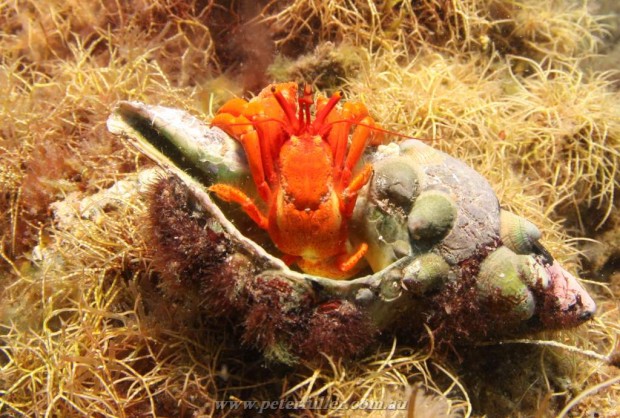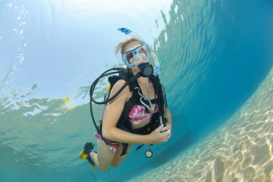
The Duckenfield, Sydney
The Duckenfield was a steamer collier that sank in May 1889. The remains lie in about 21-23 m/68-75 ft along a rocky reef. It is considered to be one of the most notable shipwrecks in Sydney.
Home > WATER SPORTS > Scuba Diving > Ardrossan Barge, Yorke Peninsula
The Ardrossan Barge measured 140 ft/42.6 m in length, 26 ft/7.9 m width, 13.5 ft/4.1 m depth and had a capacity of 450 cubic yards. The steel barge had 9 watertight compartments and 6 sets of hopper doors, which were originally opened by hand but later converted to hydraulic operation.
The barge had been used to dump spoil from dredging operations in Port Adelaide and most major out-ports, but became surplus to requirements after the commissioning of two self-propelled barges in 1978. On April 11th, 1984 the motorized barge Denis O’Malley towed No. 5 dumb hopper barge to a site one nautical mile south of the Zanoni shipwreck.
The spot is recommended only for advanced scuba-divers who should also keep an eye out for great white sharks, which are common visitors when the snapper run is at its peak.

The Duckenfield was a steamer collier that sank in May 1889. The remains lie in about 21-23 m/68-75 ft along a rocky reef. It is considered to be one of the most notable shipwrecks in Sydney.
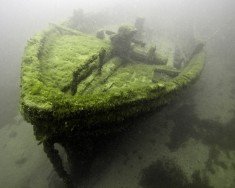
Lake Michigan is one of the five Great Lakes, the only one placed entirely within the United States and the second largest Great Lake by volume. It has the same surface elevation as Lake Huron, making the two technically a single lake. The Straits of Mackinac connects Lake Michigan and Lake Huron. Over the years, many ships have sunk in the Straits. One of the shipwrecks lying in the Straits of Mackinac Underwater Preserves is St. Andrew.
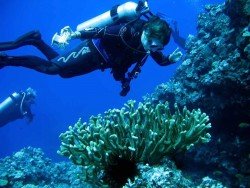
Cronulla is a beach-side suburb in southern Sydney, at about 26 km/16 mi in the south of Sydney's CBD (Central Business District). Cronulla lies on a peninsula, between Botany Bay on the north and Port Hacking on the south. Cronulla is a popular tourist location and attracts many beach enthusiasts.
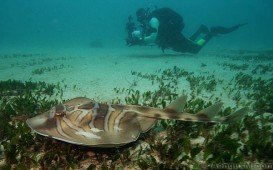
North Head is the northern headland of the entrance to Sydney Harbour. All along this section, there are several excellent dive sites.
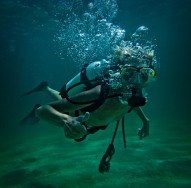
Perth is the capital city of Western Australia, located on the Swan River. The climate here is classified as Mediterranean, with hot and dry summers and cool and wet winters. Immerse yourself in the unique combination of stunning natural surroundings, beautiful beaches with clear waters, greenery park-lands and outstanding city architecture that attract visitors all year long.
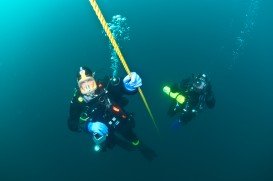
Lake Michigan is the second largest Great Lake by volume and the only one located entirely in the United States. The lake’s shoreline is more than 1600 mi/2575 km and the average depth is 195 ft/59.4 m. Lake Michigan and Lake Huron have the same surface elevation and are technically a single lake. They are actually connected by the Straits of Mackinac, where many ships have foundered due to heavy storms. The Straits of Mackinac Underwater Preserve, located at the northern edge of Lakes Michigan and Huron, tries to preserve Michigan’s shipwrecks for next generations. One of the shipwrecks found is Colonel Ellsworth.

Adelaide, the liveliest city in Australia, is the capital of South Australia state. It is situated on the Adelaide Plains and more specifically at the north side of Fleurieu Peninsula. It was built next to Torrens River and is surrounded by the Mount Lofty Ranges and the Gulf St Vincent. The climate is considered to be Mediterranean, with dry and hot summers and temperatures that can reach up to 42°C/107.6°F, and humid and cool winters with frequent rainfalls. Overall, Adelaide is a planned city, organized in five squares in the city center and surrounded entirely by a ring of parks.
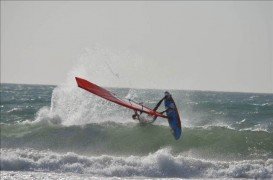
Adelaide, the liveliest city in Australia, is the capital of South Australia state and is situated on the Adelaide Plains and more specifically at the north side of Fleurieu Peninsula. The city is built next to Torrens River and is surrounded by the Mount Lofty Ranges and the Gulf St Vincent.

Adelaide, the liveliest city in Australia, is the capital of South Australia state. It is situated on the Adelaide Plains and more specifically at the north side of Fleurieu Peninsula. It is built next to Torrens River and is surrounded by the Mount Lofty Ranges and the Gulf St Vincent. Craigburn is located at 20.9 km/13 mi from Adelaide's CBD.
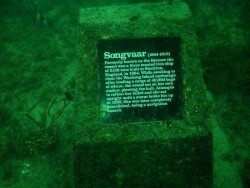
Wardang Island, also known as Wauraltee Island, is a small island of 20 km²/7.7 mi² in the Spencer Gulf, at 10 km/6 mi in the northwestern coast of Port Victoria on the Yorke Peninsula, South Australia.
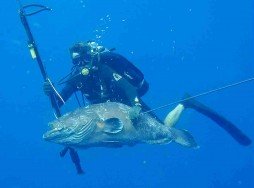
Built in 1873, Edithburgh Jetty is 170 m/557 ft long and 12 m/39 ft wide, and it is considered to be the most popular dive on the Yorke Peninsula, at 250 km/155 mi in the west of Adelaide in South Australia.

Point Turton is a delightful town which overlooks the calm waters of Hardwicke Bay. The town is situated only two and a half hours from Adelaide and it offers miles of white sand beaches, reefs for walking and shell collecting opportunities.
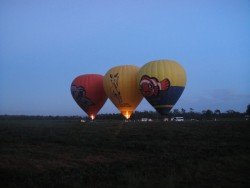
Experience Australia’s premier wine region from a majestic hot air ballooning over Barossa Valley. The valley is located at 60 km/37 mi, about an hour's drive north east of Adelaide, South Australia.
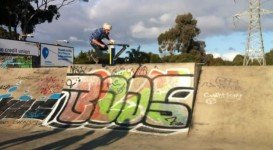
Adelaide, the liveliest city in Australia, is the capital of South Australia state and is situated on the Adelaide Plains and more specifically at the north side of Fleurieu Peninsula. The city is built next to Torrens River and is surrounded by the Mount Lofty Ranges and the Gulf St Vincent.

